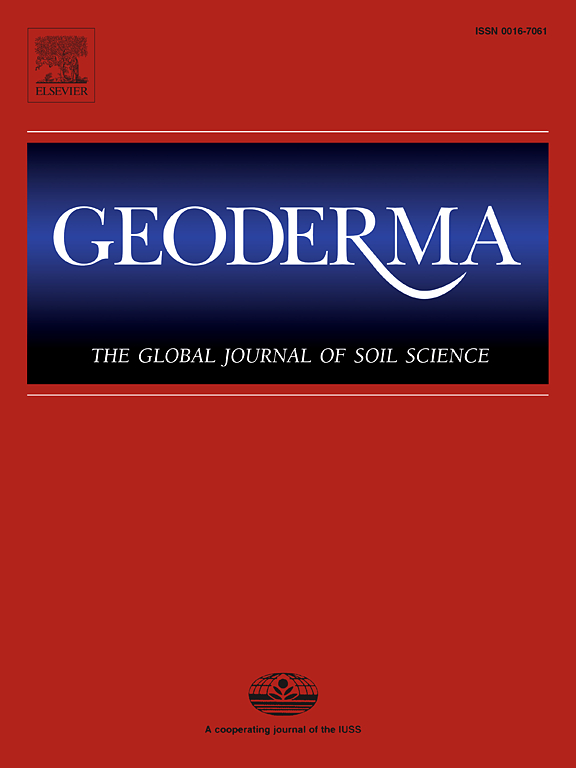利用脲酶抑制剂处理尿素,在中西欧农业环境条件下减少区域氨排放
IF 5.6
1区 农林科学
Q1 SOIL SCIENCE
引用次数: 0
摘要
尿素是全球使用最广泛的合成肥料,2022年占德国化肥消费量的16%。施用于土壤时,氮(N)以氨(NH3)的形式释放,造成环境污染,并间接增加一氧化二氮(N2O)的排放。尿素中NH3的损失也代表了作物生产中N的损失。因此,脲酶抑制剂(UIs)越来越多地应用于农业实践,以减轻氮的损失,并确保符合一些欧洲国家最近出台的法规。这一发展应反映在国家一级报告的排放量中。因此,要精确计算尿素施用造成的NH3损失,需要具有代表性的排放和减排因子。虽然一些元研究提出了全球范围内的减排因素,但由于环境和作物条件的变化,特别是在欧洲,它们在各国之间的适用性值得怀疑。我们对目前国际上的文献进行了分析,得出了一个新的排放因子,用于估算西欧和中欧地区施用尿素后NH3的损失,该排放因子适合纳入德国排放清单和其他类似种植条件国家的排放清单。基于线性混合效应模型,我们发现了60%的消减因子。与理论预期相反,温度、土壤pH、土壤CEC和土地利用等环境因素对这种减排效果没有显著影响。我们的研究结果强调需要进一步的综合数据集来完善国家层面的排放计算,以反映区域天气和种植条件对使用美国减少NH3的影响。本文章由计算机程序翻译,如有差异,请以英文原文为准。
Regionalized ammonia emission abatement by urease inhibitor treatment of urea for agro-environmental conditions of Western Central Europe
Urea is the most widely used synthetic fertilizer worldwide, covering 16% of fertilizer consumption in Germany in 2022. It has a notable propensity to release nitrogen (N) in the form of ammonia (NH3) when applied to soil, contributing to environmental pollution, and indirectly increasing nitrous oxide (N2O) emissions. This loss of NH3 from urea also represents a loss of N for crop production. Consequently, urease inhibitors (UIs) are increasingly applied in agricultural practice to mitigate N losses, and to ensure compliance with regulations recently introduced in some European countries. This development should be reflected in reported emissions at national level. Representative emission and abatement factors are, therefore, required for a precise calculation of NH3 losses from urea application. While some meta-studies suggest abatement factors on a global scale, their applicability across countries is questionable, due to variable environmental and crop conditions, especially within Europe.
We conducted an analysis of the current international literature to derive a new emission factor for NH3 losses after application of urea with UIs for Western Central Europe, that is suitable for integration into the German emission inventory and inventories of other countries with similar cropping conditions. Based on a linear mixed-effects model, we found an abatement factor of 60 %. In contrast to theoretical expectations, environmental factors, such as temperature, soil pH, soil CEC and land use had no significant influence on this abatement effect. Our findings emphasize the need for further comprehensive data sets to refine emission calculations at the national level, reflecting effects of regional weather and cropping conditions on the NH3 abatement by use of UIs.
求助全文
通过发布文献求助,成功后即可免费获取论文全文。
去求助
来源期刊

Geoderma
农林科学-土壤科学
CiteScore
11.80
自引率
6.60%
发文量
597
审稿时长
58 days
期刊介绍:
Geoderma - the global journal of soil science - welcomes authors, readers and soil research from all parts of the world, encourages worldwide soil studies, and embraces all aspects of soil science and its associated pedagogy. The journal particularly welcomes interdisciplinary work focusing on dynamic soil processes and functions across space and time.
 求助内容:
求助内容: 应助结果提醒方式:
应助结果提醒方式:


